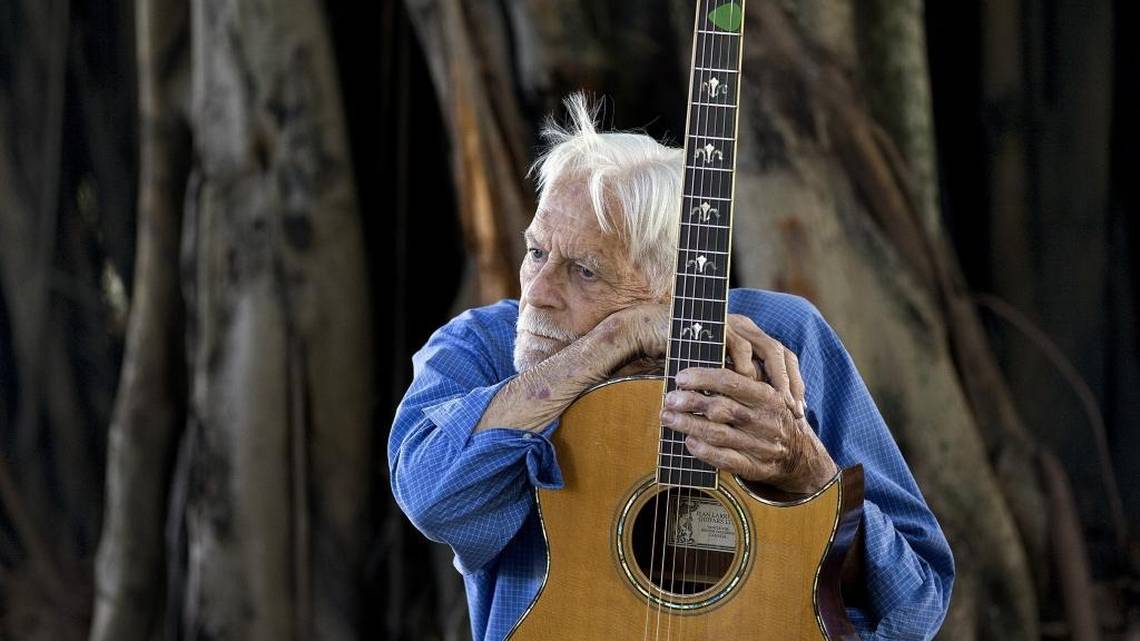My full name is Robert Joseph Ingram. I was born in Long Island City, New York, in 1938. I came to Miami literally by accident. I was hit by an automobile in New York and came down to recover in that winter of 1952 when I was 14 years old and I just never went back.
My father was a musician who worked in the hotels in Miami Beach in the winter and in the Atlantic City area in spring. It was just my father and I at first and then my mother and father reunited here after years of separation.
When I got to Miami, I started ninth grade at Horace Mann Junior High and then after one year went on to Edison High School. I was there until my senior year in ‘56 when some friends and I decided mid-year to join the Navy.
A couple of us went to boot camp together at Great Lakes. Being smart kids, we went in February. We left Miami, where the weather was perfect, to go to Great Lakes in the Chicago area where it was very unpleasant.
After that, I went to submarine school in New London, Connecticut, and wound up in Key West. I never thought I was going to leave Florida and wind up back in Florida. When I joined the Navy, I thought I was going to Hawaii or some exotic place like that, but I didn’t. I went to a very exotic place, Key West.
When I came with the military, it was just a couple of months after the Cuban revolution ended. We would make weekend trips to Havana because our captain was senior and he liked Cuba.
So I enjoyed it, I really did. I enjoyed it so much that when I came out of the Navy I didn’t stay home very long. I went to New York and got a seaman’s card and went back out on a merchant ship. I went to work for what became ExxonMobil. We sailed from Beaumont, Texas, to the ports up north – New York, New Hampshire, Boston – delivering fuel. It was a week each way, seven days down and seven days back, coming up the Gulfstream. I enjoyed that for a while.
I was home on one of my vacations, hanging out with my old high school buddies who were either in college or working. A friend of mine said, “Let’s go to this bar tonight. I want you to hear this guy, he’s a singer. He plays guitar. You play guitar, don’t you?” My father had taught me a little bit. So we went to a place called the Drum Beater’s Lounge on 79th Street and Biscayne Boulevard.
There was a guy called Vince Martin singing there. He’d come down from New York and had had one hit record in the early burgeoning folk music scene, a song called “Cindy, Oh Cindy.” And he made a lot of money on it. Then that song was re-recorded by Eddie Fisher and it became a major top-40 hit. So Vince was riding the crest of that. He came down to Florida and bought some boats, tried to start a charter business, and wound up back singing in the bars.
I went into the bar and heard him sing. When I came out of there that night I thought, I could do that. I started playing my guitar again and listening to folk musicians like Joan Baez.
We all used to hang out in the Gold Dust Lounge with a guy named Stu Gray, who ran the Gold Dust Lounge. He eventually got me to play guitar and sing in his lounge. That’s how I started, and I never went back to the merchant ships.
All these years later, I’m still happy to be here. I know a couple of things. I know I’m not going to hell. And I also think that I’ve already been to heaven, here. That’s about all I know.



